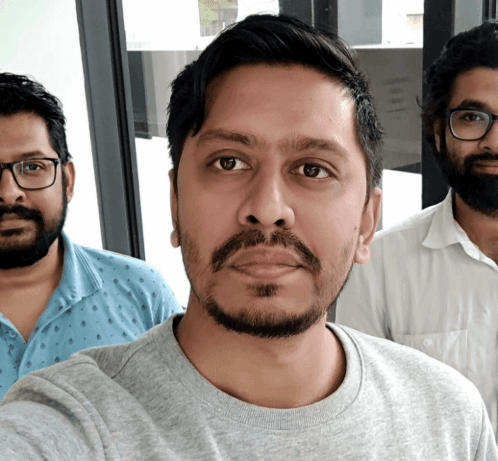How Oleg Galeev Sold Two Laser-Focused Pet Affiliate Sites for $1 Million+ Using Counterintuitive SEO Tactics


Business Description
Table of Contents
Navigate through the case study sections
Executive Summary
Case Study Content
Turning Two Small Pet Affiliate Sites into a $1 Million+ Exit
Few affiliate marketers would bet on two micro-niche websites with only 150 posts each, 1,500 daily visitors, and zero display ads making over $1 million from a sale. But that’s exactly what Oleg Galeev accomplished. Let’s break down how these wildly efficient pet sites sidestepped the expected paths and landed a massive payday in 2023.
About Oleg & His Philosophy
Oleg Galeev, SEO Lead at Vancouver’s Stigan Media, started in SEO in 2014 and built his first monetized blogs by 2018. Unlike many, Oleg didn’t churn out piles of content or chase every hot new algorithm hack. Instead, he focused on quality, took time to test and review products himself, and selected niches and partnerships that fit his interests and smarts. This focus, combined with his technical SEO chops and skepticism for the easy way, underpins his approach.
Niche Selection: Passion Over Numbers
Instead of picking a niche for its search volumes alone, Oleg started with what he was genuinely interested in. He’d considered coffee but bounced after seeing high competition. With several pets at home, the pet industry came naturally. He went deep, not broad, into specific corners of the pet world. That depth let him understand user needs, test real products on his own animals, and spot content gaps that mass-produced sites would miss. Keyword selection was balanced: mostly low competition, but Oleg didn’t ignore tough terms that made real sense for his audience.
Monetization: No Display Ads, Smarter Affiliate Programs
Oleg never used display ads for more than a short experiment. When he did, conversion rates for affiliate sales plummeted by up to 35%. He ditched them and went affiliate-only, but he didn’t just stick to Amazon. After Amazon slashed pet category commissions from 8% to 3%, Oleg built direct relationships with product makers, sometimes convincing them to start affiliate programs from scratch. One partner, coaxed in by seeing competitor data, wound up offering him 2X their rivals’ commissions and ended up making up 15% of his total site revenue. In the end, Amazon brought in only 10% of income; the rest was from higher-paying, direct affiliate arrangements.
Content Strategy: Real Use, Real Photos, Real Opinions
Years before Google’s “Helpful Content” push, Oleg already wrote from firsthand experience. He secured products (buying, borrowing, or getting free review samples), tested them at home, and photographed them himself. This created unique, trustable content. His article mix: deep-dive reviews, honest negative takes (to build trust and recommend better alternatives), and head-to-head comparison articles, even with zero keyword volume, helped cement the sites’ topical authority. His “best” lists were always concise (3-5 products) and updated monthly for freshness. Oleg’s discipline extended to the overall site: he resisted posting on broader pet topics and doubled down on continuous minor improvements to the 150 core posts.
Smart Traffic: SEO Foundation, But Diversified Sources
While SEO was always the main driver of traffic, Oleg didn’t put all his eggs in the Google basket. In 2021, he launched a faceless YouTube channel using AI-generated voiceovers to convert blog posts into videos. Some videos picked up over 20,000 views and drove extra site visits. Oleg noticed a side benefit: sites with more diverse traffic sources tended to rank better overall, guessing Google might now favor sites that get real users from multiple channels, not just trending search.
Link Building: Low-Effort, Expired-Domain Links
Instead of expensive agency campaigns, Oleg used Shared.Domains, a service for building content and selling limited links from cleaned-up expired domains. The process: pick up expired domains, republish related content, and after a safe wait, place high-quality contextual links. Oleg faced concerns from potential buyers about link quality; he overcame them by explaining the slow, careful approach used on Shared.Domains. In the end, buyers were happy with the facts and security the links brought.
The Sale: Patience and Platforms Pay Off
Oleg knew affiliate revenue built on Google isn’t stable forever. In 2022, he decided to sell. It wasn’t quick: two different marketplaces produced no real offers for his six-figure-earning sites, and it took over a year to line up a buyer. Finally, at Empire Flippers, he found serious, funded buyers. He settled at a 38x monthly earnings multiple, closing deals at $1.1 million total.
What’s Next?
After exiting his pet sites, Oleg didn’t slow down. He’s managing a dozen new projects, including travel and crypto-focused sites (like My Trip to Ecuador and OCryptoCanada), always testing tactics and applying lessons from his greatest hits. The main thing: build on passion, focus tightly, optimize constantly, and watch for changing rules.
- Laser focus on a micro-niche + deep content beats scale.
- Skip display ads if they hurt affiliate earnings.
- Create honest, negative reviews to build trust and direct readers.
- Negotiate direct affiliate deals and be ready to educate partners.
- Update and improve existing content monthly, don’t just keep publishing new.
- Diversify your traffic: add video, search, and forum presence.
Key Takeaways
- 1Focusing on micro-niches with true personal interest led to deeper, more effective content and defensible rankings.
- 2Relying on affiliate offers outside of Amazon’s program and building custom partnerships boosted commissions by up to 2X.
- 3Eliminating display ads improved affiliate conversions by around 35%, significantly increasing revenue.
- 4Using unique, firsthand product reviews with original photos built trust and strong site authority in Google's eyes.
- 5Constantly updating and refining a smaller set of articles delivered better results than chasing a bloated content calendar.
- 6Expanding traffic sources beyond Google, especially with YouTube, helped both direct visits and rankings.
Key Facts
Tools & Technologies Used
Premium Content Locked
Subscribe to access the tools and technologies used in this case study.
Unlock NowHow to Replicate This Success
Premium Content Locked
Subscribe to access the step-by-step replication guide for this case study.
Unlock NowInterested in Being Featured?
Share your success story with our community of entrepreneurs.
Explore More Case Studies
Discover other inspiring business success stories

How ScrapingBee Bootstrapped a $1M ARR Web Scraping API SaaS
ScrapingBee was created by Kevin Sahin and Pierre de Wouf after several failed side projects. They pivoted from a browse...
ScrapingBee

How Kat Turned Horror Movie Phobia into a $4K/Month YouTube Success
Katherine “Kat” Fogler launched a YouTube channel in September 2022 forcing herself to watch horror films despite hating...
KatWatchesHorrorMovies

How Contentpace’s Founders Hit Six Figures by Listening to Users
Three Bangladeshi founders built Contentpace, an SEO content analysis SaaS, by digging into hundreds of user requests, r...
Contentpace
